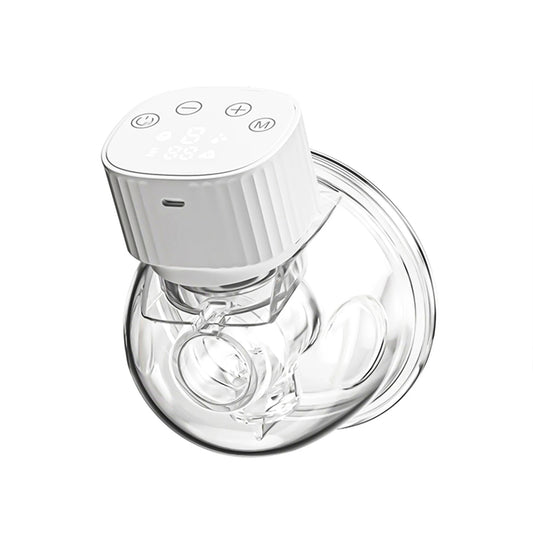-
BabyHeart HiFlow Wearable Electric Breast Pump - FDA Cleared
Regular price From $99.00Regular priceUnit price per$149.00Sale price From $99.00 Sold out
Sold out -
Rechargeable Baby Bottle Brush
Regular price $39.00Regular priceUnit price per$0.00Sale price $39.00
Wireless breast pump
Modern pumps come in compact, wearable designs that keep you hands free. If you are comparing options, start with comfort and fit, then look at noise, battery life, cleaning and cup capacity. Our wearable breast pump range is built for everyday use at home, work or on the go.
How to choose a comfortable wearable breast pump
Noise levels
Quieter motors are easier to use overnight and in shared spaces. Check the product specs and reviews for real world noise feedback.
Correct fit
Choose the right flange size and ensure a soft, even seal around the nipple. The cup should sit securely in your bra without pinching or rubbing.
Comfort and feel
Pumping should not hurt. If you notice soreness, redness or sharp pain, stop and check sizing and setup. Replace worn valves and seals promptly.
How often should a wireless breast pump be cleaned?
Clean milk contact parts after every session and allow them to air dry fully. Never immerse the motor or charge port in water.
Manual or hand pumps
- Disassemble and separate washable parts from non wash items.
- Wash with warm soapy water, rinse well and air dry on a clean rack.
- Wipe non wash components with a damp cloth and allow to dry.
Electric or battery powered pumps
- Detach all cups, valves and seals before cleaning.
- Wipe the motor body with a soft cloth. Do not submerge.
- Wash milk contact parts as above and reassemble only when fully dry.
Tips
- Follow the manual for your specific model.
- Replace parts that look warped, cracked or loose to maintain suction.
How do I store breast pump parts?
Short term: Keep clean, dry parts in a rigid, clean container or pouch so seals are not crushed.
Long term: Store in a sanitised, lidded container in a cool, dry place. Check periodically for wear before next use.
Helpful BabyHeart essentials
Build your kit with pump accessories and spares, digital thermometers for quick checks and sleep sound machines for calmer nights. Explore more in baby essentials.
Questions on fit or setup? Reach our Australian team via the Contact page. For delivery, returns and payments see Shipping, Returns, Klarna and Zip.
Important information
Information on this page and our products is for general wellness and convenience. It is not a substitute for professional medical advice, diagnosis or treatment. Always consult a qualified healthcare professional with any concerns about your health or your baby's health.

